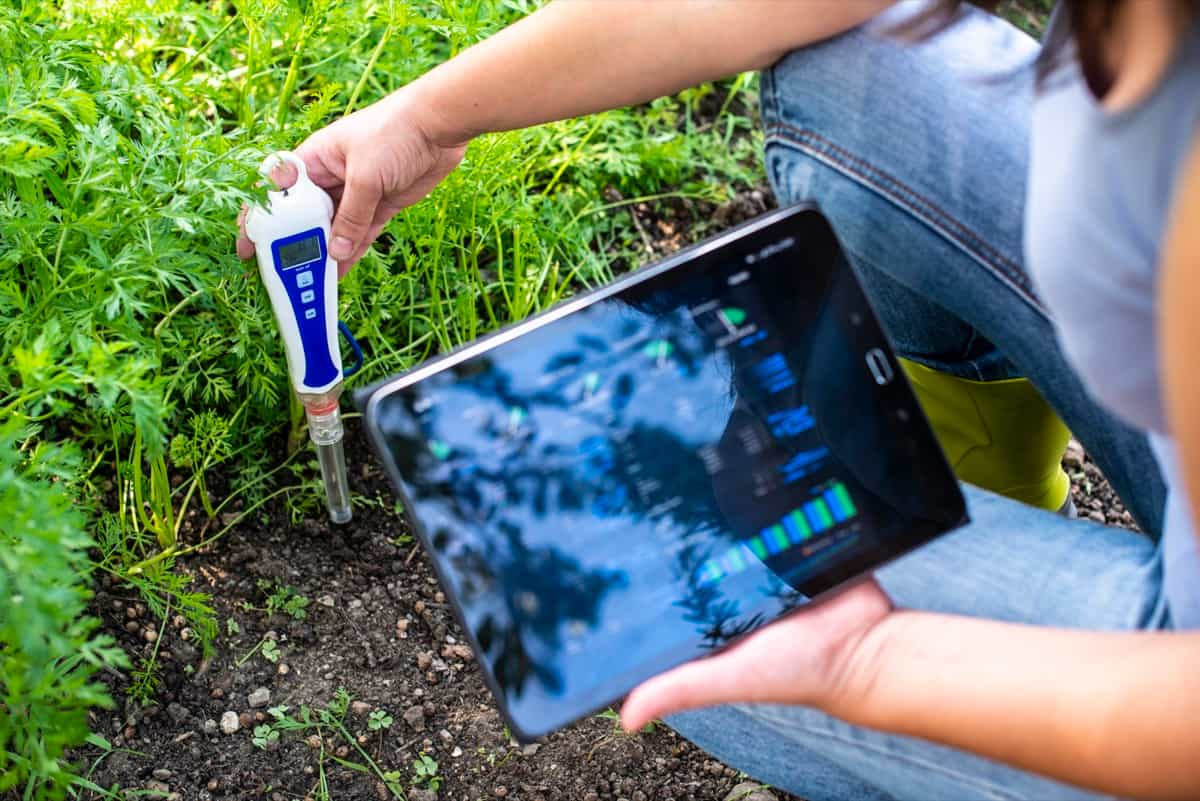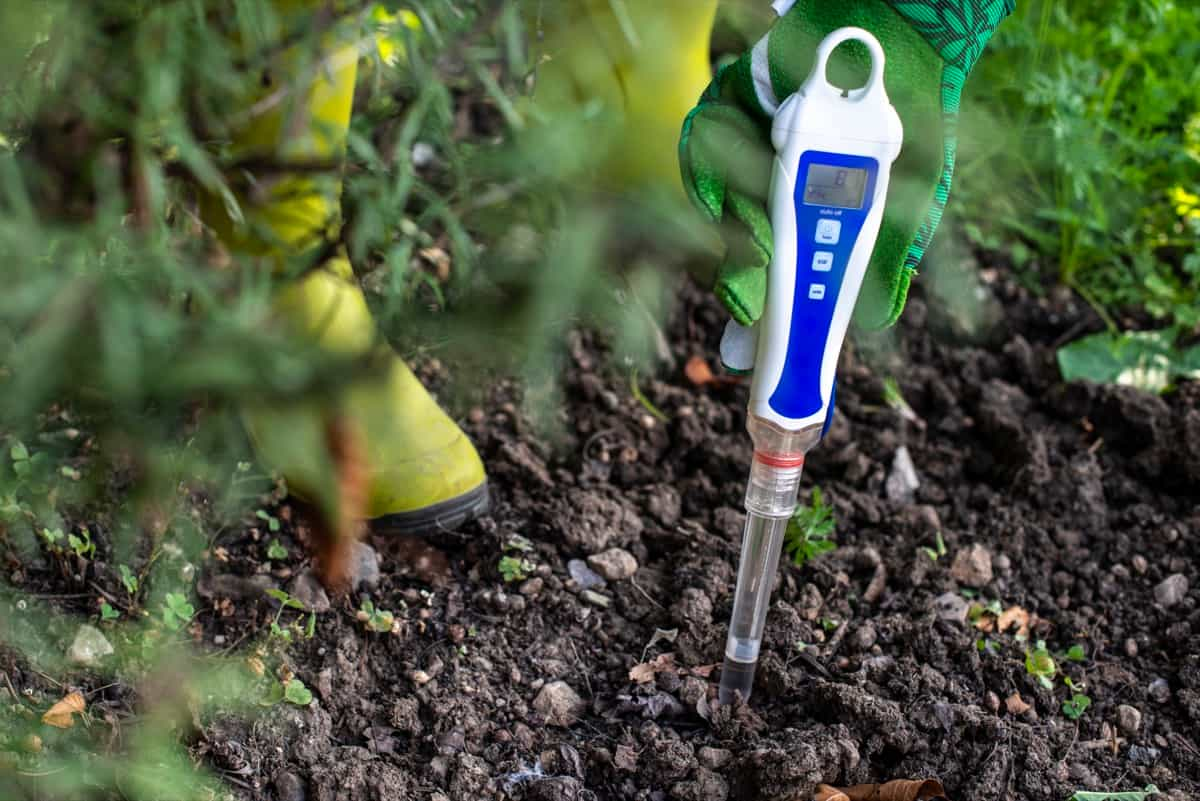Getting the right soil pH level for your plants can be tricky. All plants, whether vegetables, fruits, flowers, or herbs, need a certain pH level for optimal growth. Certain soil pH levels are important, whether growing vegetables, fruits, flowers, or herbs in your backyard garden or taking to indoor container gardening. Knowing your soil’s pH level is an important part of successful gardening. Let’s check out more information on soil pH levels for plants below.

Different plants require different levels, and understanding these requirements can help ensure that your garden provides the best environment for each type of plant. With a little research, you can determine the ideal range for everything you want to grow in your garden, whether it be vegetables, fruits, flowers, or herbs.
Soil pH levels for plants
What is soil pH?
The pH scale measures how acidic or basic a substance is. The pH scale goes from 0 to 14, with 7 being neutral. On a pH scale, below 7 is considered acidic, and anything above 7 is considered basic. Soil pH levels can range from 3.5 to 8.5. Most plants prefer a soil pH that is slightly acidic, around 6.0 to 6.8. Some plants prefer more acidic soils, around 4.5 to 5.5. And a few plants prefer more alkaline soils, around 7.0 to 8.0. You can test your soil’s pH level before planting.
Importance of soil pH
The pH of the soil plays a key role in plant growth. Soil pH is among the most important considerations regarding farming and gardening. The pH of the soil will determine what kind of plants can grow in it, how well they grow, and how much yield you get from your crops or garden.
Understanding soil pH is important for any gardener or farmer who wants to get the best out of their land. You must test the pH of your soil before planting to ensure that it is within the ideal range for the plants you want to grow. While some plants can tolerate a wide range of pH levels, others are much more sensitive and need to be in specific conditions to thrive.
In case you missed it: Potassium Humate Fertilizer Uses in Agriculture: Benefits for Plants, Dosage Per Acre, and Application Methods

Best soil pH for growing plants
Most plants do best in soil that is slightly acidic to neutral. A soil test will tell you the current pH of your soil and whether it needs to be adjusted up or down. When growing vegetables, fruits, flowers, or herbs, it is important to know what pH levels are best for each type of plant. The ideal soil pH levels for different plants can change depending on the type of plant. For example, vegetables generally prefer slightly acidic soil with a pH between 6.0 and 6.8.
Fruits and flowers typically prefer a slightly alkaline soil with a pH between 7.0 and 7.2. Herbs generally prefer neutral soil with a pH of around 7.0. Different plants also have different ideal pH levels depending on the growth stage. For example, young plants typically prefer a more acidic soil, while mature plants prefer a more alkaline soil. It’s important to test your soil regularly to ensure that it has the right pH level for the growing plants.
Signs that your plants are struggling with incorrect pH
- If the soil has too high a pH, it can make it difficult for plants to absorb nutrients. This can lead to stunted growth and yellowing leaves. Soil that is too low in pH can be equally problematic. Plants may be unable to access the nutrients they need, leading to poor growth. In extreme cases, low-pH soil can cause root rot.
- Plants need a certain level of soil pH to thrive. The leaves of the plant are yellowing or turning brown. This is a sign of nutrient deficiency, which can be caused by poor soil pH.
- If your plants are not looking as healthy as they should, it could be due to soil with a poor pH level.
- If your plants are struggling to grow, it could be a sign that the pH of their environment is incorrect. Stunted growth is one of the most common symptoms of incorrect pH, so if your plants aren’t growing as quickly as they should be, it’s worth checking the pH of their soil or water.
- If your plants struggle with incorrect pH, there are a few signs to look for. Flowers and fruit may be discolored, wilted, or stunted. Leaves may be yellow or dropped off. Plants may also be more susceptible to pests and diseases.
- Once you know the pH levels, you can adjust accordingly. Be careful not to adjust too much at once – make small changes and test often until you get a perfect balance.
Tips for adjusting the soil pH
- Once you know the current soil pH, you can adjust accordingly until you reach the desired level. The ideal pH for most plants is between 6.0 and 7.0. To change the pH of your soil, you’ll need to add either an amendment that will make it more acidic or one that will make it more alkaline.
- You can lower the soil pH by adding sulfur, aluminum sulfate, or iron sulfate. You’ll need to be careful not to add too much at once, as this can damage your plants.
- If you raise the pH of your soil, if it’s too acidic, you can add lime or wood ash. Again, be mindful of how much you’re adding so that you don’t burn your plants.
- To change the soil pH, you must add either an acidic or alkaline material. Add things like coffee grounds, lemon juice, or vinegar to make the soil more acidic. You can add baking soda or wood ash to make the soil more alkaline.
In case you missed it: 11 Best Homemade Natural Garden Fertilizers: DYI for Houseplants, Vegetables, Flowers, and Herbs

Conclusion
It is important to understand the soil pH levels for your plants to maximize their growth and health. Knowing how acidic or alkaline your soil is can also help you determine which types of plants will flourish best in your garden. ItIt’sssential that when planting outdoors, you test the soil first so that you are sure of what nutrients are available and if the pH level meets the needs of the specific type of plant. With a little research and effort, you can ensure a successful harvest no matter what type of plants you decide to grow.
- Feed Your Flock for Less: Top 10 Tips to Save on Chicken Feed
- Ultimate Guide to Ossabaw Island Hog: Breeding, Raising, Diet, and Care
- Hatching Answers: The Top 10 Reasons Your Chickens Aren’t Laying Eggs
- Eggs and Economics: Breaking Down the Cost of Raising Backyard Chickens
- Defend Your Greens: Proven Methods to Keep Iguanas Out of Your Garden
- Ultimate Guide to Cinnamon Queen Chicken: A Comprehensive Guide for Beginners
- Ultimate Guide to California Tan Chicken: Breeding, Raising, Diet, Egg-Production and Care
- Ultimate Guide to Marsh Daisy Chicken: Breeding, Raising, Diet, and Care
- 10 Types of Chicken Farming Businesses You Can Start for Profits